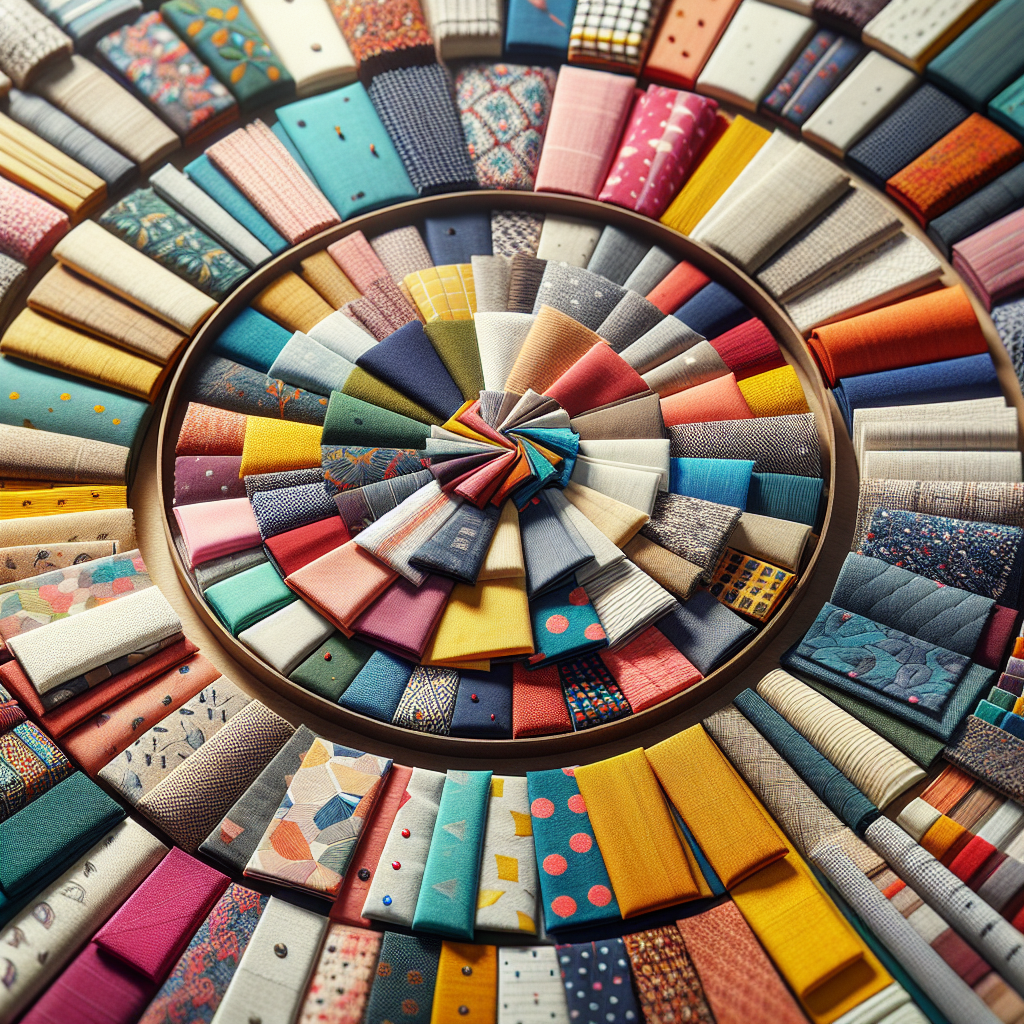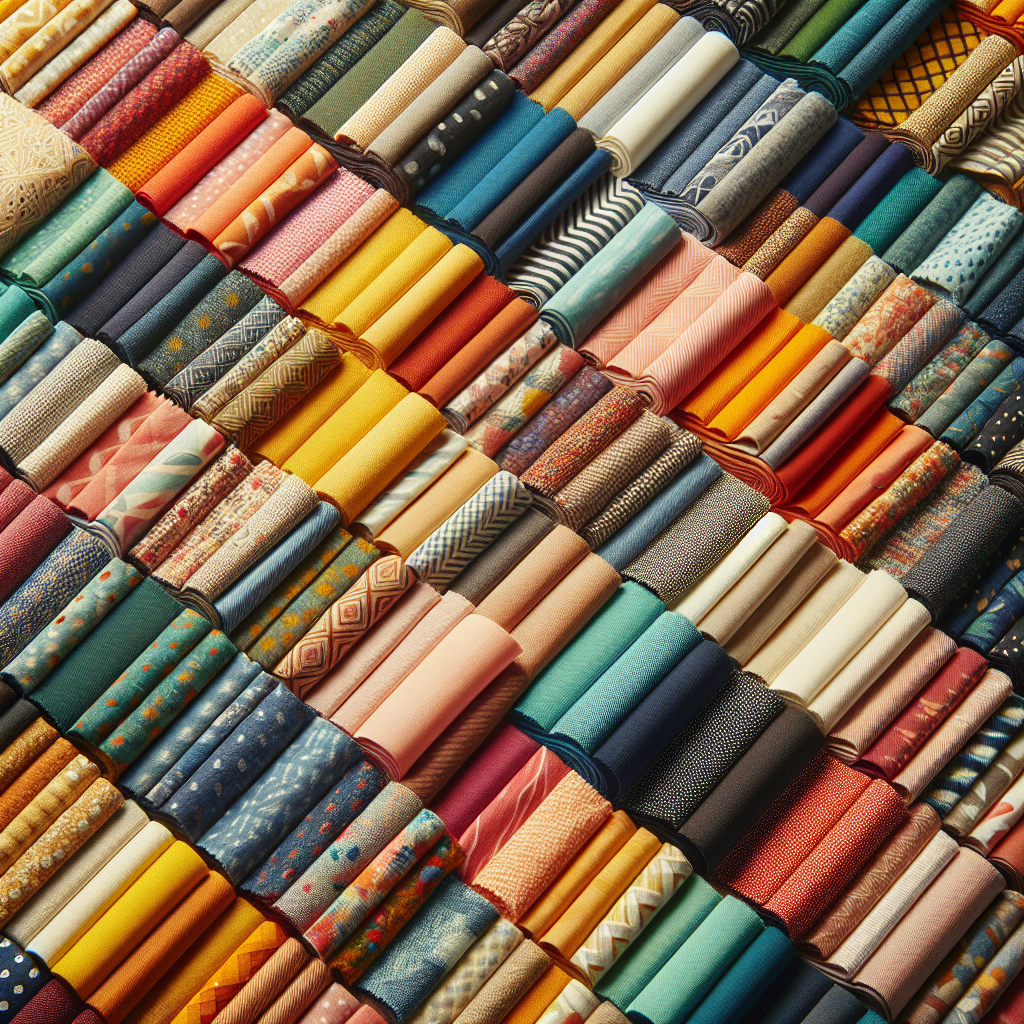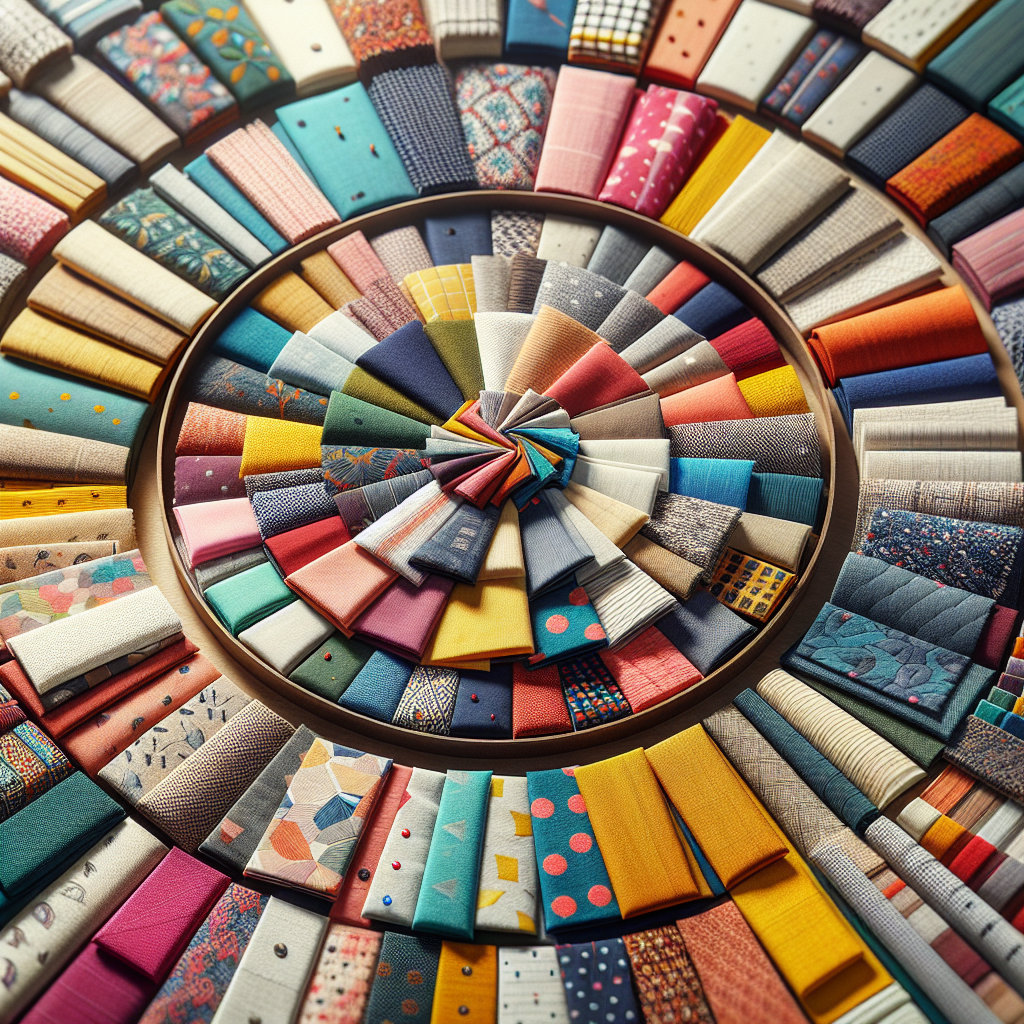Have you ever wondered about the different types of fabric and how they behave when used for quilting? Understanding the characteristics of fabrics such as cotton, linen, and blends, as well as their weights, is crucial in order to create a successful quilt. This question explores the suitability of each fabric type for various quilting projects and offers tips on effectively mixing different textures and weights. Considerations such as shrinkage, ease of sewing, and the final drape and feel of the quilt are also important factors to keep in mind. So, let’s dive into the fascinating world of fabric and discover how to create quilts that not only look stunning but also feel incredible.

Types of Fabric
Cotton
Cotton is a popular fabric choice for quilting projects due to its versatility and wide range of colors and prints available. It is a natural fiber that is soft, breathable, and comfortable to wear. Cotton fabric also has good heat and moisture control properties, making it ideal for quilts. It is easy to care for and can be machine-washed and dried, making it suitable for everyday use. Cotton fabrics are known for their durability and are resistant to pilling or stretching. However, cotton fabric tends to wrinkle easily and may require ironing.
Linen
Linen is another excellent choice for quilting projects. It is made from the fibers of the flax plant and is known for its strength and durability. Linen fabric is highly breathable and has good moisture-wicking properties, making it suitable for warm climates. It also has a distinctive, natural texture that adds visual interest and depth to quilts. Linen is a lightweight fabric and has a crisp, clean look. However, it can be prone to wrinkling and may require ironing. Linen fabric is often used for more formal or elegant quilting projects.
Blends
Blended fabrics are fabrics that are made by combining two or more different fibers. Common blends for quilting include cotton-polyester blends and cotton-silk blends. Blended fabrics often combine the desirable properties of different fibers, such as the softness of cotton and the durability of polyester. They are often more resistant to wrinkling than natural fibers alone and may have enhanced colorfastness. Blended fabrics can offer a wider range of textures and weights, making them suitable for various quilting projects.
Characteristics of Each Fabric Type
Behavior
Each fabric type has its own unique behavior when it comes to quilting projects. Cotton fabric, for example, is known for its ability to hold stitches well and is easy to work with. It tends to have a moderate amount of stretch, which can be beneficial when piecing together quilt blocks. Linen fabric, on the other hand, has less stretch compared to cotton and may require more accurate cutting and sewing techniques. Blended fabrics can behave differently depending on the blend composition. Some blends may have more stretch while others may have less.
Suitability for Quilting Projects
When choosing a fabric type for quilting projects, it’s important to consider the specific requirements of the project. Cotton fabric is widely used for quilting due to its versatility and ease of use. It is suitable for various quilting techniques, including hand quilting and machine quilting. Linen fabric, with its natural texture and durability, is often used for more intricate or decorative quilting projects. Blended fabrics can be used for a wide range of quilting projects depending on the specific blend and its characteristics.

Understanding Fabric Weights
Definition
Fabric weight refers to the thickness and heaviness of a fabric. It is measured in terms of ounces per square yard or grams per square meter. The weight of a fabric can affect its draping properties and how it feels against the skin. Understanding fabric weights is important when choosing fabrics for quilting projects as it can impact the overall appearance and functionality of the quilt.
Importance in Quilting
The weight of the fabric can influence the warmth, drape, and texture of a quilt. Lighter weight fabrics are often used for quilts that require a softer and more fluid drape, such as baby quilts or lightweight summer quilts. Heavier weight fabrics, on the other hand, provide more structure and can be used for quilts that require more durability and warmth, such as bed quilts or winter quilts. Understanding fabric weights allows quilters to make informed decisions when selecting fabrics for their quilting projects.
Different Weight Categories
Fabrics are generally categorized into three weight categories: lightweight, medium weight, and heavyweight. Lightweight fabrics, also known as quilting cottons, typically weigh around 3-4 ounces per square yard (100-135 grams per square meter). They are versatile and commonly used for quilting projects. Medium weight fabrics weigh around 5-8 ounces per square yard (170-270 grams per square meter) and are suitable for a wide range of quilting projects. Heavyweight fabrics, weighing 9 ounces or more per square yard (305 grams per square meter or more), are often used for more substantial quilts or projects that require extra warmth and durability.
Mixing Textures and Weights
Considerations
When mixing textures and weights in quilting, there are a few considerations to keep in mind. First, consider how the different fabrics will complement each other visually. Mixing textures can create visual interest and dimension in a quilt, but it’s important to ensure that the textures work well together and enhance the overall design. Additionally, consider how the different fabric weights will affect the overall structure and drape of the quilt. Mixing weights can create depth and variation in a quilt, but be mindful of how the different weights will interact and affect the quilt’s final appearance.
Effects on Quilt Design
Mixing textures and weights in quilting can have a significant impact on the overall design of the quilt. By combining fabrics with different textures, quilters can create contrast and add visual interest to their quilts. For example, pairing a smooth, solid fabric with a textured fabric can create a dynamic visual effect. Mixing weights can also enhance the design of a quilt by creating variation in the density and structure of the quilt blocks or overall quilt. Quilters can experiment with different combinations of textures and weights to achieve their desired design aesthetic.
Factors to Consider
Shrinkage
Shrinkage is an important factor to consider when working with fabrics for quilting projects. Some fabrics, especially natural fibers like cotton and linen, have a tendency to shrink when washed and dried. This can affect the size and appearance of the finished quilt. It’s important to prewash and preshrink fabrics before beginning a quilting project to minimize the risk of shrinkage. Additionally, consider the potential shrinkage of different fabrics when mixing textures and weights to ensure that the final quilt maintains its desired proportions.
Ease of Sewing
The ease of sewing is another factor to consider when choosing fabrics for quilting projects. Some fabrics may be more challenging to sew with due to their texture or weight. For example, fabrics with a loose weave or heavy weight may require special techniques or equipment to ensure accurate stitching. Consider your sewing skills and equipment when selecting fabrics for quilting projects, and choose fabrics that you are comfortable working with. Choose fabrics that will enhance your quilting experience and make the sewing process more enjoyable.
Final Drape and Feel of Quilt
The final drape and feel of the quilt are important considerations when choosing fabrics for quilting projects. Fabrics with a lighter weight and softer texture tend to create quilts that drape and flow more fluidly. These quilts may be more suitable for decorative or lightweight purposes. Heavier weight fabrics provide more structure and can create quilts that have a more substantial and cozy feel. Consider the intended use and purpose of the quilt when selecting fabrics for quilting, and choose fabrics that will achieve the desired drape and feel.
